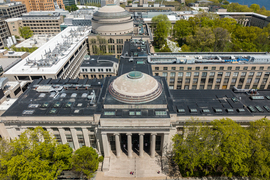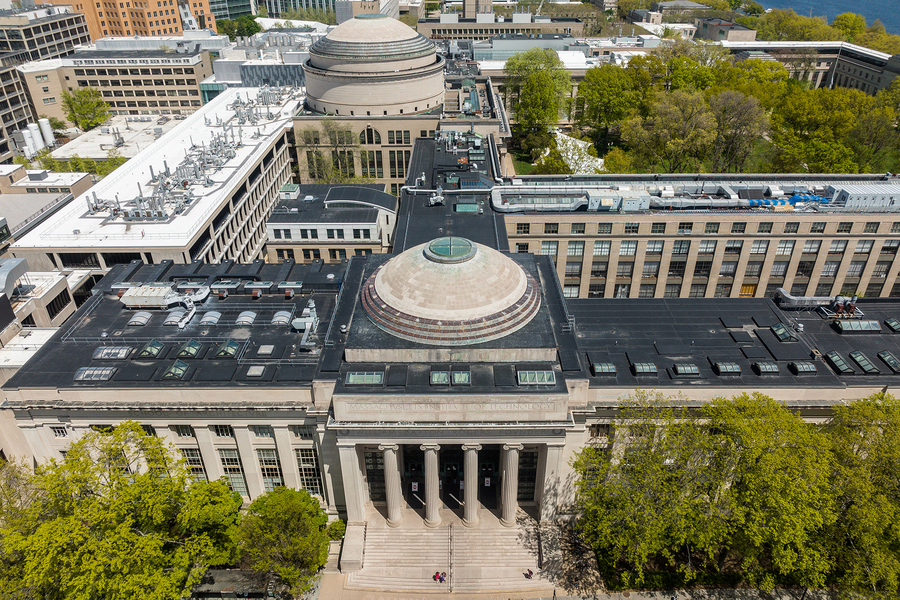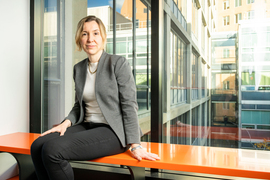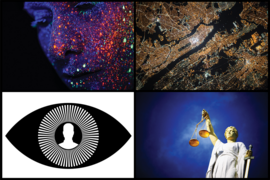Graduate student Nikasha Patel ’22 is using artificial intelligence to build a computational model of how infants learn to walk, which could help robots acquire motor skills in a similar fashion.
Her research, which sits at the intersection of reinforcement learning and motor learning, uses tools and techniques from computer science to study the brain and human cognition.
It’s an area of research she wasn’t aware of before she arrived at MIT in the fall of 2018, and one Patel likely wouldn’t have considered if she hadn’t enrolled in a newly launched blended major, Course 6-9: Computation and Cognition, the following spring.
Patel was drawn to the flexibility offered by Course 6-9, which enabled her to take a variety of courses from the brain and cognitive sciences major (Course 9) and the computer science major (Course 6). For instance, she took a class on neural computation and a class on algorithms at the same time, which helped her better understand some of the computational approaches to brain science she is currently using in her research.
After earning her undergraduate degree last spring, Patel enrolled in the 6-9 master’s program and is now pursuing a PhD in computation and cognition. While a PhD wasn’t initially on her radar, the blended major opened her eyes to unique opportunities in cross-disciplinary research. In the future, she hopes to study motor control and the computational building blocks that our brains use for movement.
“Looking back on my experience at MIT, being in Course 6-9 really led me up to this moment. You can’t just think of the world through one lens. You need to have both perspectives so you can tackle these complex problems together,” she says.
Blending disciplines
The Department of Brain and Cognitive Sciences’ Course 6-9 is one of four blended computing majors available. Each of the majors is offered jointly by the Department of Electrical Engineering and Computer Science, which is part of both the Schwarzman College of Computing and the School of Engineering, and a different MIT department. Course 6-7, Computer Science and Molecular Biology, is offered with the Department of Biology; Course 6-14, Computer Science, Economics, and Data Science, is offered with the Department of Economics; and Course 11-6, Urban Science and Planning with Computer Science, is offered with the Department of Urban Studies and Planning.
Each major is designed to give students a solid grounding in computational fundamentals, such as coding, algorithms, and ethical AI, while equipping them to tackle hard problems in different fields like neurobiology, economics, or urban design, using tools and insights from the realm of computer science.
The four majors, all launched between 2017 and 2019, have grown rapidly and now encompass about 360 undergraduates, or roughly 8 percent of MIT’s total undergraduate enrollment.
With so much focus on generative AI and machine learning in many disciplines, even those not traditionally associated with computer science, it is no surprise to associate professor Mehrdad Jazayeri that blended majors, and Course 6-9 in particular, have grown so rapidly. Course 6-9 launched with 40 students and has since quadrupled its enrollment.
Many students who come to MIT are enamored with machine-learning tools and techniques, so the opportunity to utilize those skills in a field like neurobiology is a great opportunity for students with varied interests, says Jazayeri, who is also director of education for the Department of Brain and Cognitive Sciences and an investigator at the McGovern Institute for Brain Research.
“It is pretty clear that new developments and insights in industry and technology will be heavily dependent on computational power. Fields related to the human mind are no different from that, from the study of neurodegenerative diseases, to research into child development, to understanding how marketing affects the human psyche,” he says.
Computation to improve medicine
Using the power of computer science to make an impact in biological research inspired senior Charvi Sharma to major in Course 6-7.
Though she was interested in medicine from a young age, it wasn’t until she came to MIT that she began to explore the role computation could play in medical care.
Coming to college with interests in both computer science and biology, Sharma considered a double major; however, she soon realized that what really interested her was the intersection of the two disciplines, and Course 6-7 was a perfect fit.
Sharma, who is planning to attend medical school, sees computer science and medicine dovetail through her work as an undergraduate researcher at MIT’s Koch Institute for Cancer Research. She and her fellow researchers seek to understand how signaling pathways contribute to a cell’s ability to escape from cell cycle arrest, or the inability of a cell to continue dividing, after DNA damage. Their work could ultimately lead to improved cancer treatments.
The data science and analysis skills she has honed through computer science courses help her understand and interpret the results of her research. She expects those same skills will prove useful in her future career as a physician.
“A lot of the tools used in medicine do require some knowledge of technology. But more so than the technical skills that I’ve learned through my computer science foundation, I think the computational mindset — the problem solving and pattern recognition — will be incredibly helpful in treatment and diagnosis as a physician,” she says.
AI for better cities
While biology and medicine are areas where machine learning is playing an increasing role, urban planning is another field that is rapidly becoming dependent on big data and the use of AI.
Interested in learning how computation could enhance urban planning, senior Kwesi Afrifa decided to apply to MIT after reading about the blended major Course 11-6, urban sciences and planning with computer science.
His experiences growing up in the Ghanian capital of Accra, situated in the midst of a rapidly growing and sprawling metro area of about 5.5 million people, convinced Afrifa that data can be used to shape urban environments in a way that would make them more livable for residents.
The combination of fundamentals from Course 6, like software engineering and data science, with important concepts from urban planning, such as equity and environmental management, has helped him understand the importance of working with communities to create AI-driven software tools in an ethical manner for responsible development.
“We can’t just be the smart engineers from MIT who come in and tell people what to do. Instead, we need to understand that communities have knowledge about the issues they face, and tools from tech and planning are a way to enhance their development in their own way,” he says.
As an undergraduate researcher, Afrifa has been working on tools for pedestrian impact analysis, which has shown him how ideas from planning, such as spatial analysis and mapping, and software engineering techniques from computer science can build off one another.
Ultimately, he hopes the software tools he creates enable planners, policymakers, and community members to make faster progress at reshaping neighborhoods, towns, and cities so they meet the needs of the people who live and work there.











